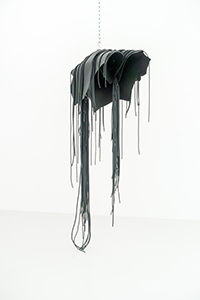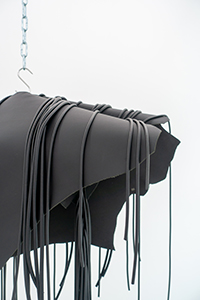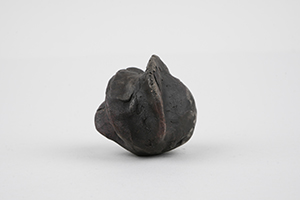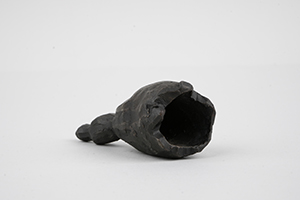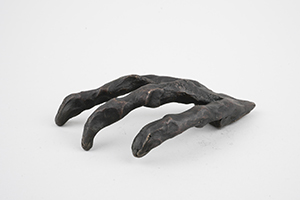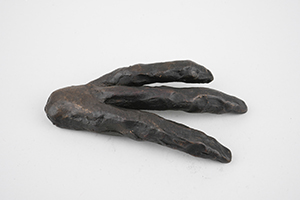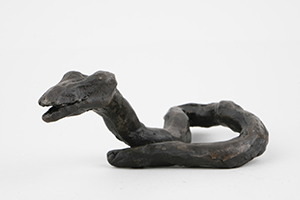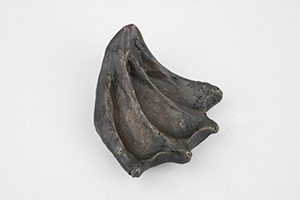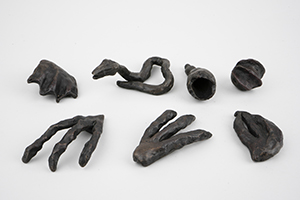
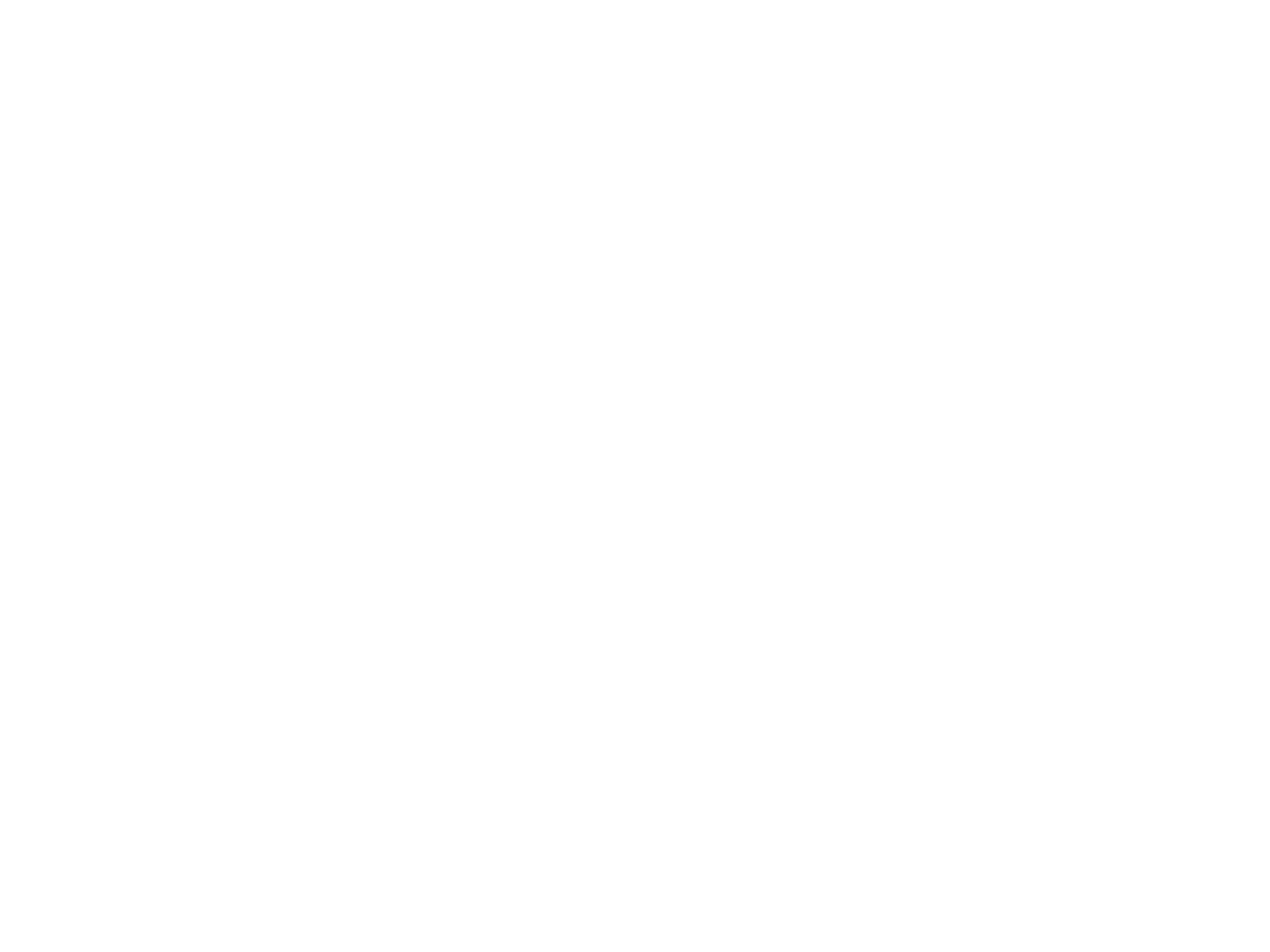
Earthly Things – Ghostly Matters
Una Szeemann
Una Szeemann’s installations follow material traces and transferences of invisible phenomena. An approach and exploration through the possibilities of parallel thinking and an investigation of unconscious processes.
Solo and group exhibitions include, Museo MAN Nuoro, Kunsthaus Zurich, Kunsthalle Winterthur, MASI Lugano, Kunstverein in Hamburg, Belvedere 21 Vienna, Nam June Paik Art Center Seoul, Kunstmuseum Lucerne, Fundació Joan Miró Barcelona, Contemporary Art Center Vilnius and Kunsthalle Vienna. She also exhibited at Manifesta 11, the 5th Busan Biennale in Korea, 3rd Contour Biennale in Belgium, 9th Lyon Biennale and 52nd Venice Biennale.
Una Szeemann, Andare in sogno and Hypnagogia Objects. Photos: Kai Erdmann, Berlin 2025; Kunstgiesserei St Gallen, 2024
Andare in Sogno (Walking in the dream)
With the sculptural work “Andare in sogno” (“Walking in the dream”), Una Szeemann addresses the apparent separation of body and mind during dreaming, giving form to the moment of transition: with leather hanging from the ceiling, disembodied shells are created that evoke presence and absence at the same time.
Andare in Sogno (Im Schlafe wandeln)
Mit der skulpturalen Arbeit „Andare in sogno“ („Im Schlafe wandeln“) thematisiert Una Szeemann die scheinbare Trennung von Körper und Geist während des Träumens und gibt dem Moment des Übergangs eine Form: Mit von der Decke hängendem Leder werden körperlose Hüllen geschaffen, die Präsenz und Abwesenheit zugleich anklingen lassen.
Hypnagogia Objects
The works of Swiss artist Una Szeemann are always based on research that draws on the fields of psychoanalysis, in particular auto-hypnosis, biology and anthropology and their overlaps. Szeemann deals with the relationship between the invisible and the visible, the presence and absence of bodies, nature and imitation and the associated questions of temporality and processuality.
Una Szeemann focuses here on the state of consciousness between wakefulness and sleep, hypnagogia. She has acquired a technique for consciously prolonging this liminal state. In a kind of waking dream diary, she writes down visions she experiences, which during the day she translates into delicate watercolors. Modelled objects, made from beeswax and then cast in bronze, mark the moment of the transition of consciousness through her falling down: Claw and shell, lying firmly in the hand, between an uneasy clutch and infinite foresight. Objects that make the oscillation of body and mind, of visual and tactile levels of experience, of past and future more tangible.
Hypnagogia Objekte
Den Werken der Schweizer Künstlerin Una Szeemann liegen stets Recherchen zu Grunde, die sich aus den Feldern der Psychoanalyse, insbesondere der Auto-Hypnose, Biologie und Anthropologie und ihren Überschneidungen speisen. Dabei verhandelt Szeemann das Verhältnis zwischen Unsichtbarem und Sichtbarem, der An- und Abwesenheit von Körpern, Natur und Nachahmung und damit einhergehenden Fragestellungen von Zeitlichkeit und Prozessualität.
Una Szeemann hat sich auf den Bewusstseinszustand zwischen Wachsein und Schlaf, die Hypnagogie, fokussiert. Sie hat sich eine Technik angeeignet, diesen schwebenden Zustand bewusst verlängern zu können. In einer Art Wachtraum-Tagebuch notiert sie erlebte Visionen und setzt diese bei Tag in feinste Aquarelle um. Modellierte Objekte, aus Bienenwachs angefertigt und dann in Bronze gegossen, markieren den Moment des Bewusstseinübergangs durch ihr Hinunterfallen: Kralle und Muschel, fest in der Hand liegend, zwischen unbehaglichem Klammergriff und unendlicher Weitsicht. Objekte, welche das Changieren von Körper und Geist, von visuellen und taktilen Erfahrungsebenen, von Vergangenem und Zukunft greifbarer machen.
